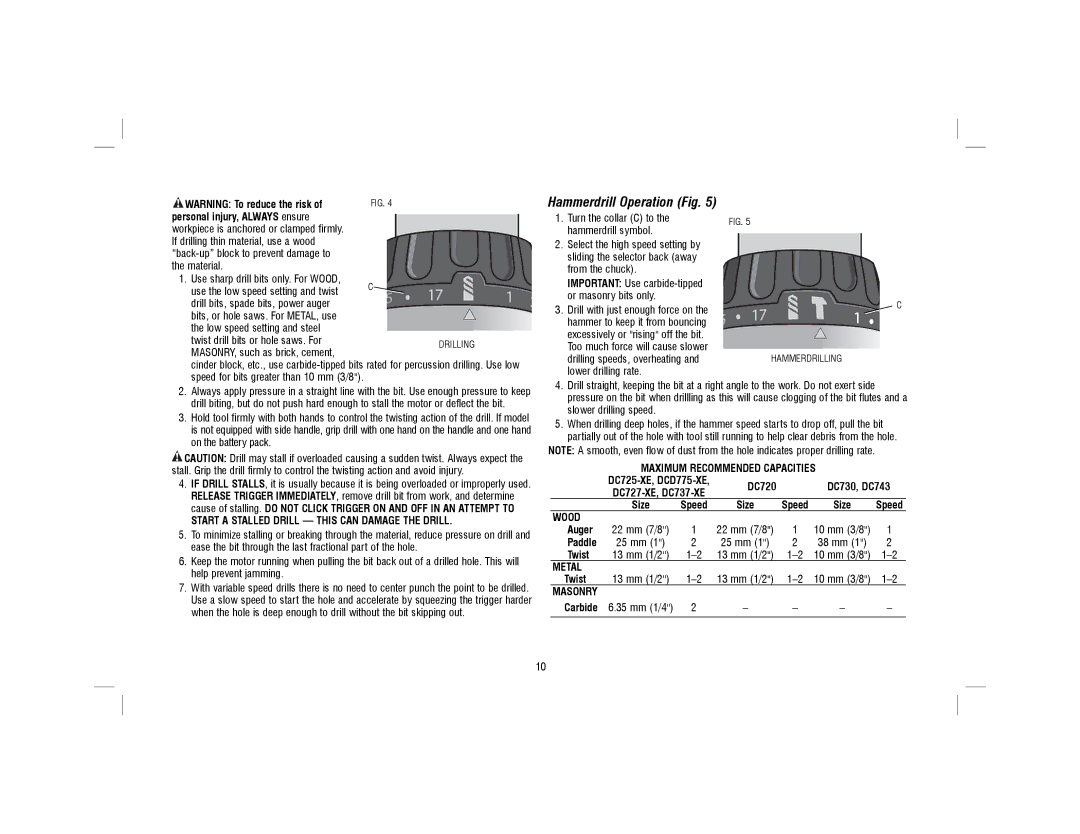DCD775KLR specifications
The DeWalt DCD775KLR is a highly regarded cordless drill driver that combines power, versatility, and convenience, making it an excellent choice for both professionals and DIY enthusiasts. This tool is part of DeWalt's reliable 18V lineup, designed to deliver optimal performance for a wide range of tasks.One of the standout features of the DCD775KLR is its compact and lightweight design. Weighing in at just 4.7 pounds, this drill is easy to maneuver, reducing operator fatigue during extended use. Its ergonomic handle also provides a comfortable grip, which enhances control and precision while working.
The DCD775KLR is equipped with a high-performance, 2-speed transmission that allows users to switch between speeds of 0-450 RPM for low-speed applications and 0-1500 RPM for high-speed tasks. This versatility makes it suitable for a variety of materials, including wood, metal, and plastic. The drill's variable speed trigger further provides greater control for precise applications.
Another impressive characteristic of the DCD775KLR is its powerful 1/2-inch keyless chuck. This feature allows for quick and easy bit changes without the need for additional tools, maximizing efficiency on the job site. The drill is also capable of delivering up to 350 units watts out (UWO), enabling it to handle tough drilling and fastening tasks with ease.
The DCD775KLR features integrated LED lights that illuminate work areas, providing visibility in dimly lit spaces. This is particularly useful for working in attics, basements, or during evening projects. Moreover, the drill is designed with an all-metal transmission for enhanced durability and longevity, ensuring it stands up to heavy use.
Battery life is critical in a cordless drill, and the DCD775KLR does not disappoint. It comes with two compact 1.5 Ah lithium-ion batteries that maintain consistent power and charge quickly, minimizing downtime. The compatibility with other 18V DeWalt batteries adds to the tool's convenience.
In summary, the DeWalt DCD775KLR stands out with its lightweight design, powerful performance, 2-speed transmission, keyless chuck, integrated LED light, and exceptional battery life. This drill driver embodies the robust construction and innovative technology that DeWalt is known for, making it a reliable choice for any task at hand. Whether you’re a seasoned professional or tackling home improvement projects, the DCD775KLR is engineered to provide the performance and durability needed to get the job done.

